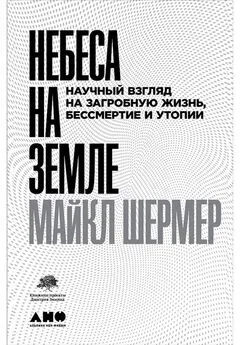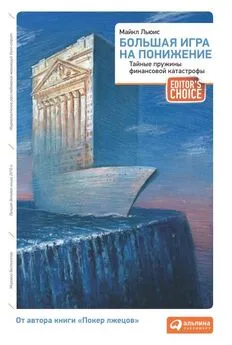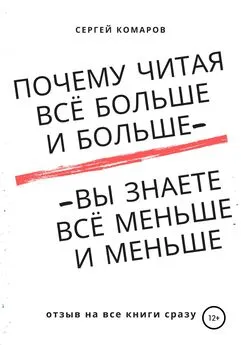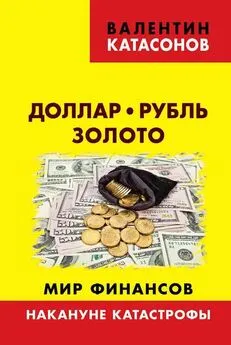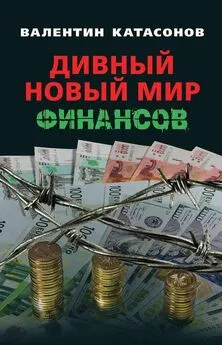Майкл Мобуссин - Больше, чем вы знаете. Необычный взгляд на мир финансов
- Название:Больше, чем вы знаете. Необычный взгляд на мир финансов
- Автор:
- Жанр:
- Издательство:Array Литагент «Альпина»
- Год:2014
- Город:Москва
- ISBN:978-5-9614-3247-3
- Рейтинг:
- Избранное:Добавить в избранное
-
Отзывы:
-
Ваша оценка:
Майкл Мобуссин - Больше, чем вы знаете. Необычный взгляд на мир финансов краткое содержание
Больше, чем вы знаете. Необычный взгляд на мир финансов - читать онлайн бесплатно ознакомительный отрывок
Интервал:
Закладка:
6. Robert R. Wiggins and Timothy W. Ruefli, “Hypercompetitive Performance: Are The Best of Times Getting Shorter?”; Статья представлена на ежегодном собрании Академии менеджмента, отделение политики и стратегии бизнеса, 31 марта 2001 г.
7. Хотя я считаю эту гипотезу предположительно верной, но не уверен в том, что она подтверждается данными. Дело в том, что последние годы, охваченные настоящим исследованием, характеризовались исторически высокими уровнями списания активов и затрат на реструктуризацию, что, скорее всего, привело к искажению бухгалтерских данных.
8. Richard Foster and Sarah Kaplan, Creative Destruction: Why Companies That Were Built to Last Underperform the Markets – and How to Successfully Transform Them (New York: Doubleday, 2001), 13; John Y. Campbell, Martin Lettau, Burton Malkiel, and Yexiao Xu, “Have Individual Stocks Become More Volatile? An Empirical Explanation of Idiosyncratic Risk”, Journal of Finance 54 (February 2001): 1–43.
9. J. Bradford DeLong and Lawrence M. Summers, “The ‘New Economy’: Background, Historical Perspective, Questions and Speculations”, Federal Reserve Bank of Kansas City Economic Review , Fourth Quarter 2001. См.: http://www.kc.frb.org/PUBLICAT/
10. ECONREV/Pdf/4q01delo.pdf.
11. Alfred Rappaport and Michael J. Mauboussin, Expectations Investing: Reading Stock Prices for Better Returns (Boston, Mass.: Harvard Business School Press, 2001), 26–27, 36–38.
Глава 22. Играйте по правилам
1. См. статью «Часто задаваемые вопросы о Deep Blue», http://www.research.ibm.com/deepblue/meet/html/d.3.3.html.
2. Katie Haffner, “In an Ancient Game, Computing’s Future”, New York Times , August 1, 2002.
3. Anna Muoio, “All the Right Moves”, Fast Company , May 1999; http://www.fastcompany.com/online/24/chess.html.
4. Эта идея перекликается с рекомендацией игрокам Пагги Пирсона. См.: Michael J. Mauboussin and Kristen Bartholdson, “Puggy Pearson’s Prescription”, The Consilient Observer 1, no. 11 (June 4, 2002).
5. Kathleen M. Eisenhardt and Donald N. Sull, “Strategy as Simple Rules”, Harvard Business Review (January 2001): 107–16.
Глава 23. Выживают наиболее приспособленные
1. Dan Goodgame, “The Game of Risk: How the Best Golfers in the World Got Even Better”, Time , August 14, 2000.
2. Stuart Kaufmann, At Home in the Universe (Oxford: Oxford University Press, 1996).
3. Steve Maguire, “Strategy is Design: A Fitness Landscape Framework”, Managing Complexity in Organizations: A View in Many Directions (Westport, Conn.: Quorum Books, 1999), 67–104.
4. Eric D. Beinhocker, “Robust Adaptive Strategies”, Sloan Management Review 40, no. 3 (Spring 1999): 95–106.
5. Daniel C. Dennett, Darwin’s Dangerous Idea: Evolution and the Meanings of Life (New York: Simon & Shuster, 1995).
6. Robert Loest, “Fitness Landscapes and Investment Strategies, Parts 1 and 2”, Portfolio Manager Commentary – IPS Funds (July and August 1998).
7. Clayton M. Christensen, The Innovator’s Dilemma: When New Technologies Cause Great Companies to Fail (Boston: Harvard Business School Press, 1997).
8. Michael J. Mauboussin and Alexander Schay, “Innovation and Markets: How Innovation Affects the Investing Process”, Credit Suisse First Boston Equity Research , December 12, 2000.
9. По-другому эти стратегии можно назвать стратегиями «использования» или «исследования». См.: Robert Axelrod and Michael D. Cohen, Harvesting Complexity (New York: Free Press, 1999), 43–58.
10. W. Brian Arthur, “Increasing Returns and the New World of Business”, Harvard Business Review (July-August 1996): 101–9.
11. Под руководством Джека Уэлча General Electric эффективно сочетала оптимизацию с риском. Например, Уэлч выделил руководителям крупнейших подразделений GE по нескольку сотен миллионов долларов, которые они могли расходовать по своему усмотрению «без вопросов». См.: Warren Bennis, “Will the Legacy Live On?”, Harvard Business Review (February 2002): 95–99.
12. Michael J. Mauboussin, “Get Real”, Credit Suisse First Boston Equity Research , June 23, 1999.
13. Shona L. Brown and Kathleen M. Eisenhardt, Competing on the Edge: Strategy as Structured Chaos (Boston: Harvard Business School Press, 1998).
Глава 24. Прострация от экстраполяции
1. См.: http://www.socialsecurity.gov/history/hfaq.html.
2. Richard Roll, “Rational Infinitively-Lived Asset Prices Must Be Non-Stationary”, Working Paper, November 1, 2000; Bradford Cornell, The Equity Risk Premium: The Long-Run Future of the Stock Market (New York: Wiley, 1999), 45–55; Eugene F. Fama and Kenneth R. French, “The Equity Premium”, Journal of Finance 57 (2002): 637–59; Jonathan Lewellen, “Predicting Returns with Financial Ratios”, MIT Sloan Working Paper 4374–02, February 2002.
3. Kenneth L. Fisher and Meir Statman, “Cognitive Biases in Market Forecasts: The Frailty of Forecasting”, The Journal of Portfolio Management 27, no. 1 (Fall 2000): 72–81.
4. Alfred Rappaport, “How to Avoid P/E Trap”, Wall Street Journal , March 10, 2003.
5. Cornell, The Equity Risk Premium, 59.
6. См.: http://www.econ.yale.edu/˜shiller/.
Глава 25. Я упал и не могу подняться
1. Слова Лаконишока процитированы в статье Марка Хулберта «Прогнозы на ближайшие пять лет кажутся превосходными… или нет?», New York Times , от 25 января 2004 г.
2. Louis K. C. Chan, Jason J. Karceski, and Josef Lakonishok, “The Level and Persistence of Growth Rates”, The Journal of Finance 58, no. 2 (April 2003): 644–84. Также см. главу 30.
3. Michael J. Mauboussin and Kristen Bartholdson, “Wither Enron: Or – Why Enron Withered”, The Consilient Observer 1, no. 1 (January 15, 2002).
4. Michael J. Mauboussin and Kristen Bartholdson, “Measuring the Moat: Assessing the Magnitude and Sustainability of Value Creation”, Credit Suisse First Boston Equity Research , December 16, 2002.
5. Michael J. Mauboussin, Alexander Schay, and Patrick J. McCarthy, “Competitive Advantage Period (CAP): At the Intersection of Finance and Competitive Strategy”, Credit Suisse First Boston Equity Research , October 4, 2001.
6. Там же, 7–9.
7. Todd Erickson, Carin Cooney, and Craig Sterling, “US Technology Sector: Mean Reversion Analysis”, CSFB HOLT Research , February 2, 2004.
8. Анализ отрасли розничной торговли проведен аналитиками из агентства HOLT Кристофером Катапано, Кэти Данн и Крейгом Стерлингом.
9. Чтобы проиллюстрировать вышесказанное, нами была создана модель, включавшая две компании с одинаковыми темпами роста операционной прибыли на уровне 8 %, одинаковой начальной рентабельностью приращенного инвестированного капитала в 100 % и идентичной стоимостью капитала. Согласно модели, рентабельность первой компании упала до нуля за 10-летний период, рентабельность второй компании – за 20 лет. Стоимость второй компании (при аналогичном росте) оказалась на 33 % выше, что дало ей разницу в показателе цены/прибыли более чем в шесть пунктов.
10. W. Brian Arthur, “Increasing Returns and the New World of Business”, Harvard Business Review (July-August 1996): 101–9.
11. См. главу 11.
Глава 26. Сотрудничество в позиционной войне
1. Robert Axelrod, The Complexity of Cooperation: Agent-Based Models of Competition and Collaboration (Princeton, N. J.: Princeton University Press, 1997), 6.
2. Robert Axelrod, The Evolution of Cooperation (New York: Basic Books, 1984), 74.
3. George Lakoff and Mark Johnson, Metaphors We Live By (Chicago, Ill.: The University of Chicago Press, 1980).
4. Axelrod, The Evolution of Cooperation , 73–87.
5. Там же, 81. Аксельрод цитирует Гиллана по книге «История 29-й дивизии»; см.: S. Gillon, The Story of the 29th Division (London: Nelson & Sons, n. d.). В конце концов командованиям британской, французской и германской армий удалось разрушить систему «живи сам и давай жить другим», заставив войска на передовой совершать постоянные рейды, которые нарушили стабильность, требуемую для поддержания негласного перемирия.
6. “Stern Stewart EVA Roundtable”, Journal of Applied Corporate Finance 7, no. 2 (Summer 1994): 46–70.
7. Детальное обсуждение этой темы см.: William Poundstone, Prisoner’s Dilemma (New York: Anchor Books, 1972).
8. Решение расширить мощности приводит обе компании к равновесию Нэша.
9. Axelrod, The Evolution of Cooperation , 27–54.
10. David Besanko, David Dranove, and Mark Shanley, Economics of Strategy , 2nd ed. (New York: John Wiley & Sons, 2000), 289–90.
11. Там же, 293–302.
12. Adam M. Brandenburger and Barry J. Nalebuff, Co-opetition (New York: Currency, 1996), 120–22.
Глава 27. Большие ожидания (роста)
1. Warren Buffet and Charlie Munger, “It’s Stupid the Way People Extrapolate the Past – and Not Slightly Stupid, But Massively Stupid”, Outstanding Investor Digest , December 24, 2001.
2. Chris Zook and James Allen, Profit from the Core (Boston: Harvard Business School Press, 2001), 11–13.
3. Я упоминаю об этом, поскольку многочисленные данные говорят о том, что слияния и приобретения оказывают отрицательное или, в лучшем случае, нейтральное влияние на стоимость. Поэтому рост через приобретения часто не приводит к повышению стоимости.
Читать дальшеИнтервал:
Закладка:


